Week4 :Continue Salinger
Chapman's legal team intended to mount an insanity defense based on expert testimony that he was in a delusional psychotic state at the time of the killing. As the trial approached, Chapman instructed his lawyers that he wanted to plead guilty, based on what he had decided was the will of God. The judge allowed the plea change without further psychiatric assessment after Chapman denied hearing voices, and sentenced him to a prison term of 20 years to life with a stipulation that mental health treatment be provided. Chapman has been imprisoned since the murder and has been denied parole nine times amidst campaigns (most notably by Yoko Ono) against his release
 "The Chimney Sweeper" is the title of a poem by William Blake, published in two parts in Songs of Innocence in 1789 and Songs of experience in 1794.The poem "The Chimney Sweeper" is set against the dark background of child labour that was prominent in England in the late XVIII and XIX Century. At the age of four and five, boys were sold to clean chimneys, due to their small size. These children were oppressed and had a diminutive existence that was socially accepted at the time. In the earlier poem, a young chimney sweeper recounts a dream had by one of his fellows, in which an angel rescues the boys from coffins and takes them to a sunny meadow; in the later poem, an apparently adult speaker encounters a child chimney sweeper abandoned in the snow while his parents are at church or possibly even suffered death where church is referring to being with God.
"The Chimney Sweeper" is the title of a poem by William Blake, published in two parts in Songs of Innocence in 1789 and Songs of experience in 1794.The poem "The Chimney Sweeper" is set against the dark background of child labour that was prominent in England in the late XVIII and XIX Century. At the age of four and five, boys were sold to clean chimneys, due to their small size. These children were oppressed and had a diminutive existence that was socially accepted at the time. In the earlier poem, a young chimney sweeper recounts a dream had by one of his fellows, in which an angel rescues the boys from coffins and takes them to a sunny meadow; in the later poem, an apparently adult speaker encounters a child chimney sweeper abandoned in the snow while his parents are at church or possibly even suffered death where church is referring to being with God.Books which read by Holden Caulfield

1.Charles Dickens
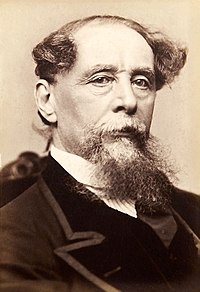
Charles John Huffam Dickens ( 7 February 1812 – 9 June 1870) was an English writer and social critic. He created some of the world's best-known fictional characters and is regarded by many as the greatest novelist of the Victorian era.His works enjoyed unprecedented popularity during his lifetime, and by the twentieth century critics and scholars had recognized him as a literary genius. His novels and short stories enjoy lasting popularity.
Born in Portsmouth, Dickens left school to work in a factory when his father was incarcerated in a debtors' prison. Despite his lack of formal education, he edited a weekly journal for 20 years, wrote 15 novels, five novellas, hundreds of short stories and non-fiction articles, lectured and performed extensively, was an indefatigable letter writer, and campaigned vigorously for children's rights, education, and other social reforms.
Dickens's literary success began with the 1836 serial publication of The Pickwick Papers. Within a few years he had become an international literary celebrity, famous for his humour, satire, and keen observation of character and society. His novels, most published in monthly or weekly installments, pioneered the serial publication of narrative fiction, which became the dominant Victorian mode for novel publication.The installment format allowed Dickens to evaluate his audience's reaction, and he often modified his plot and character development based on such feedback.For example, when his wife's chiropodist expressed distress at the way Miss Mowcher in David Copperfield seemed to reflect her disabilities, Dickens improved the character with positive features.His plots were carefully constructed, and he often wove elements from topical events into his narratives. Masses of the illiterate poor chipped in ha'pennies to have each new monthly episode read to them, opening up and inspiring a new class of readers.
Oliver Twist(First book)
 Oliver Twist, or The Parish Boy's Progress, is the second novel by English author Charles Dickens and was first published as a serial 1837–39. The story is of the orphan Oliver Twist, who starts his life in a workhouse and is then sold into apprenticeship with an undertaker. He escapes from there and travels to London, where he meets the Artful Dodger, a member of a gang of juvenile pickpockets led by the elderly criminal, Fagin.
Oliver Twist, or The Parish Boy's Progress, is the second novel by English author Charles Dickens and was first published as a serial 1837–39. The story is of the orphan Oliver Twist, who starts his life in a workhouse and is then sold into apprenticeship with an undertaker. He escapes from there and travels to London, where he meets the Artful Dodger, a member of a gang of juvenile pickpockets led by the elderly criminal, Fagin.Oliver Twist is notable for its unromantic portrayal by Dickens of criminals and their sordid lives, as well as for exposing the cruel treatment of the many orphans in London in the mid-19th century.The alternate title, The Parish Boy's Progress, alludes to Bunyan's The Pilgrim's Progress, as well as the 18th-century caricature series by William Hogarth, A Rake's Progress and A Harlot's Progress.
In this early example of the social novel, Dickens satirizes the hypocrisies of his time, including child labour, the recruitment of children as criminals, and the presence of street children. The novel may have been inspired by the story of Robert Blincoe, an orphan whose account of working as a child labourer in a cotton mill was widely read in the 1830s. It is likely that Dickens's own youthful experiences contributed as well.
2. Isak Dinesen
 Baroness Karen von Blixen-Finecke (17 April 1885 – 7 September 1962) was a Danish author, also known by the pen name Isak Dinesen, who wrote works in Danish, French and English. She also at times used the pen names Tania Blixen, Osceola, and Pierre Andrézel.
Baroness Karen von Blixen-Finecke (17 April 1885 – 7 September 1962) was a Danish author, also known by the pen name Isak Dinesen, who wrote works in Danish, French and English. She also at times used the pen names Tania Blixen, Osceola, and Pierre Andrézel.Blixen is best known for Out of Africa, an account of her life while living in Kenya, and for one of her stories, Babette's Feast, both of which have been adapted into Academy Award-winning motion pictures. She is also noted for her Seven Gothic Tales, particularly in Denmark.
Out of Africa(second book)
Out of Africa is a memoir by the Danish author Baroness Blixen . The book, first published in 1937, recounts events of the seventeen years when Blixen made her home in Kenya, then called British East Africa. The book is a lyrical meditation on Blixen’s life on her coffee plantation, as well as a tribute to some of the people who touched her life there. It provides a vivid snapshot of African colonial life in the last decades of the British Empire. Blixen wrote the book in English and then rewrote it in Danish.
Out of Africa is divided into five sections, most of which are non-linear and seem to reflect no particular chronology. The first two focus primarily on Africans who lived or had business on the farm, and include close observations of native ideas about justice and punishment in the wake of a gruesome accidental shooting. The third section, called “Visitors to the Farm,” describes some of the more colourful local characters who considered Blixen’s farm to be a safe haven. The fourth, “From an Immigrant’s Notebook,” is a collection of short sub-chapters in which Blixen reflects on the life of a white African colonist.
In the fifth and final section, “Farewell to the Farm,” the book begins to take on a more linear shape, as Blixen details the farm’s financial failure, and the untimely deaths of several of her closest friends in Kenya. The book ends with the farm sold, and with Blixen on the Uganda Railway, heading toward the steamer on the coast, looking back and watching her beloved Ngong Hills diminish behind her.
3.Thomas Hardy
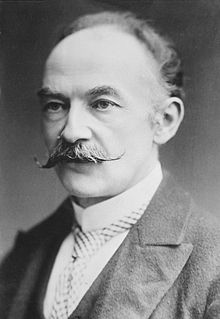 Thomas Hardy, OM (2 June 1840 – 11 January 1928) was an English novelist and poet. A Victorian realist in the tradition of George Eliot, he was influenced both in his novels and in his poetry by Romanticism, especially William Wordsworth. He was highly critical of much in Victorian society, though Hardy focused more on a declining rural society.Many of his novels concern tragic characters struggling against their passions and social circumstances, and they are often set in the semi-fictional region of Wessex; initially based on the medieval Anglo-Saxon kingdom, Hardy's Wessex eventually came to include the counties of Dorset, Wiltshire, Somerset, Devon, Hampshire and much of Berkshire, in southwest and south central England.
Thomas Hardy, OM (2 June 1840 – 11 January 1928) was an English novelist and poet. A Victorian realist in the tradition of George Eliot, he was influenced both in his novels and in his poetry by Romanticism, especially William Wordsworth. He was highly critical of much in Victorian society, though Hardy focused more on a declining rural society.Many of his novels concern tragic characters struggling against their passions and social circumstances, and they are often set in the semi-fictional region of Wessex; initially based on the medieval Anglo-Saxon kingdom, Hardy's Wessex eventually came to include the counties of Dorset, Wiltshire, Somerset, Devon, Hampshire and much of Berkshire, in southwest and south central England. Two of his novels, Tess of the d'Urbervilles and Far from the Madding Crowd, were listed in the top 50 on the BBC's survey The Big ReadConsidered a Victorian realist, Hardy examines the social constraints on the lives of those living in Victorian England, and criticises those beliefs, especially those relating to marriage, education and religion, that limited people's lives and caused unhappiness.
The Return of the Native(third book)
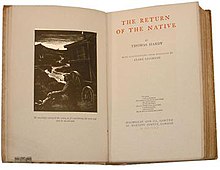
The Return of the Native is Thomas Hardy's sixth published novel. It first appeared in the magazine Belgravia, a publication known for its sensationalism, and was presented in twelve monthly installments from January to December 1878. Because of the novel's controversial themes, Hardy had some difficulty finding a publisher; reviews, however, though somewhat mixed, were generally positive. In the twentieth century, The Return of the Native became one of Hardy's most popular novels.
The Return of the Native was filmed for Hallmark Hall of Fame and broadcast on television in 1994. It was filmed in Exmoor National Park. The film stars Catherine Zeta Jones as Eustacia Vye, Clive Owen as Damon Wildeve, Ray Stevenson as Clym Yeobright, and Joan Plowright as Mrs. Yeobright. Jack Gold directed.
In 2010 an film adaptation of The Return of the Native was directed by Ben Westbrook. It is set in the Appalachian Mountains in the 1930s during The Great Depression.
4.William Somerset Maugham
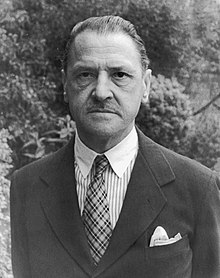 William Somerset Maugham CH ( 25 January 1874 – 16 December 1965), better known as W. Somerset Maugham, was a British playwright, novelist and short story writer. He was among the most popular writers of his era and reputedly the highest-paid author during the 1930s.
William Somerset Maugham CH ( 25 January 1874 – 16 December 1965), better known as W. Somerset Maugham, was a British playwright, novelist and short story writer. He was among the most popular writers of his era and reputedly the highest-paid author during the 1930s.After losing both his parents by the age of 10, Maugham was raised by a paternal uncle who was emotionally cold. Not wanting to become a lawyer like other men in his family, Maugham eventually trained and qualified as a physician. The initial run of his first novel, Liza of Lambeth (1897), sold out so rapidly that Maugham gave up medicine to write full-time.
During the First World War, he served with the Red Cross and in the ambulance corps, before being recruited in 1916 into the British Secret Intelligence Service, for which he worked in Switzerland and Russia before the October Revolution of 1917. During and after the war, he travelled in India and Southeast Asia; all of these experiences were reflected in later short stories and novels.
Of Human Bondage(forth book)

Of Human Bondage is a novel by W. Somerset Maugham. It is generally agreed to be his masterpiece and to be strongly autobiographical in nature, although Maugham stated, "This is a novel, not an autobiography, though much in it is autobiographical, more is pure invention." Maugham, who had originally planned to call his novel Beauty from Ashes, finally settled on a title taken from a section of Spinoza's Ethics. The Modern Library ranked Of Human Bondage No. 66 on its list of the 100 best English-language novels of the 20th century.
Maugham had a stammer (instead of a club foot), lost his mother early and was sent to his aunt and uncle, studied medicine, and his literature tastes coincide with ones of the main character. Although Maugham had never been an artist, he was rather interested in it. The writer possessed in his private collection works of four painters mentioned in the book: Pissarro, Sisley, Monet and Renoir. In the Summing Up, we get to know that he read Ruskin and became acquainted with plenty of European art pieces.
5.Ernest Miller Hemingway
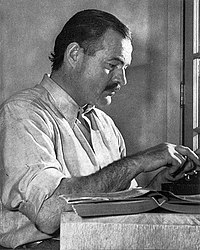 Ernest Miller Hemingway (July 21, 1899 – July 2, 1961) was an American novelist, short story writer, and journalist. His economical and understated style had a strong influence on 20th-century fiction, while his life of adventure and his public image influenced later generations. Hemingway produced most of his work between the mid-1920s and the mid-1950s, and won the Nobel Prize in Literature in 1954. He published seven novels, six short story collections, and two non-fiction works. Additional works, including three novels, four short story collections, and three non-fiction works, were published posthumously. Many of his works are considered classics of American literature.
Ernest Miller Hemingway (July 21, 1899 – July 2, 1961) was an American novelist, short story writer, and journalist. His economical and understated style had a strong influence on 20th-century fiction, while his life of adventure and his public image influenced later generations. Hemingway produced most of his work between the mid-1920s and the mid-1950s, and won the Nobel Prize in Literature in 1954. He published seven novels, six short story collections, and two non-fiction works. Additional works, including three novels, four short story collections, and three non-fiction works, were published posthumously. Many of his works are considered classics of American literature.Hemingway was raised in Oak Park, Illinois. After high school, he reported for a few months for The Kansas City Star, before leaving for the Italian front to enlist with the World War I ambulance drivers. In 1918, he was seriously wounded and returned home. His wartime experiences formed the basis for his novel A Farewell to Arms (1929).
In 1921, he married Hadley Richardson, the first of his four wives. The couple moved to Paris, where he worked as a foreign correspondent and fell under the influence of the modernist writers and artists of the 1920s "Lost Generation" expatriate community. He published his debut novel, The Sun Also Rises, in 1926. After his 1927 divorce from Richardson, Hemingway married Pauline Pfeiffer; they divorced after he returned from the Spanish Civil War, where he had been a journalist, and after which he wrote For Whom the Bell Tolls (1940). Martha Gellhorn became his third wife in 1940; they separated when he met Mary Welsh in London during World War II. He was present at the Normandy landings and the liberation of Paris.
Shortly after the publication of The Old Man and the Sea (1952), Hemingway went on safari to Africa, where he was almost killed in two successive plane crashes that left him in pain or ill health for much of his remaining life. Hemingway maintained permanent residences in Key West, Florida, (1930s) and Cuba (1940s and 1950s), and in 1959, he bought a house in Ketchum, Idaho, where he killed himself in mid-1961.
A Farewell to Arms(fifth book)
 A Farewell to Arms is a novel by Ernest Hemingway set during the Italian campaign of World War I. The book, published in 1929, is a first-person account of American Frederic Henry, serving as a Lieutenant ("Tenente") in the ambulance corps of the Italian Army. The title is taken from a poem by 16th-century English dramatist George Peele.
A Farewell to Arms is a novel by Ernest Hemingway set during the Italian campaign of World War I. The book, published in 1929, is a first-person account of American Frederic Henry, serving as a Lieutenant ("Tenente") in the ambulance corps of the Italian Army. The title is taken from a poem by 16th-century English dramatist George Peele.A Farewell to Arms is about a love affair between the expatriate American Henry and Catherine Barkley against the backdrop of the First World War, cynical soldiers, fighting and the displacement of populations. The publication of A Farewell to Arms cemented Hemingway's stature as a modern American writer,became his first best-seller, and is described by biographer Michael Reynolds as "the premier American war novel from that debacle World War I."
The novel has been adapted for the stage, initially in 1930 and subsequently, for film in 1932 and 1957, and as a television miniseries in 1966. The 1996 film In Love and War, directed by Richard Attenborough and starring Chris O'Donnell and Sandra Bullock, depicts Hemingway's life in Italy as an ambulance driver in the events prior to his writing of A Farewell to Arms.
These five book are all represent the powerless.


0 個意見:
張貼留言
訂閱 張貼留言 [Atom]
<< 首頁